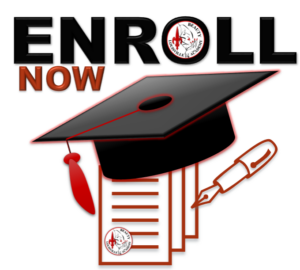Description
A nail technician course is a program of study that teaches individuals how to provide various nail care services such as manicures, pedicures, and acrylic or gel nail extensions. The course typically covers topics such as nail anatomy and physiology, infection control, product chemistry, and proper techniques for filing, buffing, and polishing nails. It may also include instruction on how to apply and remove artificial nails, and how to design and decorate nails with nail art. Upon completion of the course, students may be required to take a certification exam to become a licensed nail technician.
Curriculum Summary
Refers to student hand-books for detail.
- Anatomy and Physiology of the Nail: This module will cover the structure and function of the nails and their surrounding tissue, including the skin, bones and muscles.
- Sanitation and Sterilization: This module will cover the importance of maintaining a clean and sanitized work environment, including the proper use of disinfectants, sterilization techniques, and infection control procedures.
- Nail Diseases and Disorders: This module will cover the recognition and treatment of common nail conditions, such as fungus, ingrown nails, and brittle nails.
- Manicuring Techniques: This module will cover the basics of providing a professional manicure, including nail shaping, buffing, and polishing, as well as the proper use of cuticle nippers and other tools.
- Pedicuring Techniques: This module will cover the basics of providing a professional pedicure, including foot soaking, exfoliating, and massage techniques, as well as the proper use of tools for trimming and shaping nails and calluses.
- Artificial Nail Techniques: This module will cover the basics of applying and maintaining artificial nails, including acrylic, gel, and silk wraps, as well as the proper use of nail forms, tips, and adhesive.
- Nail Art Techniques: This module will cover the basics of creating intricate designs and patterns on nails using polish, stencils, and other decorative tools.
- Business and Ethics: This module will cover the business aspects of being a nail technician, including client communication, appointment scheduling, and record keeping, as well as the ethical considerations involved in the profession.
- Safety and Chemical Procedures: This module will cover the safety precautions and proper usage of chemicals used in nail care services.
- Role of the Nail Technician: This module will cover the professional responsibilities and opportunities available to a licensed Nail Technician.
Nail Technician Career
Progress and Hourly Pay
A career in nail technology can be a rewarding and fulfilling profession, with opportunities for growth and advancement. Many nail technicians begin their careers working in salons or spas, providing nail care services to clients. As they gain experience and build a client base, they may move on to work in larger or more upscale salons, or even open their own salon or spa.
As for pay, the median hourly wage for nail technicians in the United States is around $11.75. However, the pay can vary depending on factors such as location, experience, and the type of salon or spa where one is working. Nail technicians working in high-end salons or spas may earn higher wages, while those working in small, independent salons may earn less. Tips can also be a significant source of income for nail technicians.
Additionally, many nail technicians choose to expand their skills and knowledge by continuing their education through additional training and certifications in areas such as advanced nail art, spa treatments, or business management. This can lead to higher pay and more opportunities for advancement in their career.
It is worth noting that the pay and career progress can vary depending on the state, region and the salon/spa you work for. It’s best to research and gather information about the specific location and employer you are interested in.
Commission Based Pay
Many beauty professionals, including nail technicians, are considered independent contractors and are typically paid on a commission basis rather than an hourly basis. This means that their income is based on the services they provide and the amount they charge for those services, rather than the number of hours they work. This can be beneficial for those who are self-motivated and able to build a steady client base, as the potential for earning a higher income is greater.
However, being an independent contractor also means that they do not have the same job security or benefits as traditional employees, such as health insurance or paid time off. They are also responsible for their own taxes and expenses, such as purchasing their own supplies.
It’s also worth noting that some salons or spas may hire nail technicians as employees and pay them an hourly wage, or a combination of hourly wage and commission. It is important to carefully review the terms of employment before accepting a job as a nail technician.
It is important to research the specific salon or spa you plan to work for to understand the details of their pay structure and the responsibilities and benefits that come with it.
Kentucky Law – Requirements to be a KY licensed Nail Technician
To obtain a nail technician license in Kentucky, the following requirements must be met:
- Be at least 18 years old
- Have a 12th grade education or equivalent
- Complete a Kentucky Board of Hairdressers and Cosmetologists approved course of study in nail technology, which is 450 hours.
- Successfully pass a written and practical examination
- Submit an application for licensure and the appropriate fee to the Kentucky Board of Hairdressers and Cosmetologists.
- Receive a license verification or license prior to providing services
- Renew the license every year and complete continuing education requirements.
- If you have obtained hours or hold a license from another state, please see Out of State Info.
How to find job as a Nail Technician?
There are several ways to find a job as a nail technician:
- Networking: Reach out to other professionals in the industry, such as cosmetologists and estheticians, to learn about job opportunities.
- Online job boards: Websites like Indeed, LinkedIn, and Glassdoor have many job listings for nail technicians.
- Beauty schools: Many beauty schools have job placement services that can help you find a job after you graduate.
- Social media: Use platforms like Instagram and Facebook to showcase your work and connect with potential employers.
- Walk-ins and Resume: Some salons and spas accept walk-ins and resumes, so you can drop off your resume and speak with the manager or owner about job opportunities.
- Professional associations: Join professional associations such as the Nail Technicians Association of America and the Professional Beauty Association, which often have job listings and can connect you with employers.
- Referral: Ask your current or previous employer for referral or recommendation.
- Freelance: Consider working as a freelance nail technician, you can build your own clientele and set your own schedule, you can also get hired for private events or parties.
It’s important to note that some states and municipalities may have different regulations and licensing requirements for nail technicians, so be sure to check your local laws and regulations before applying for jobs.
Why Artificial Intelligent (AI) cannot replace Esthetician?
AI technology is advancing rapidly in many fields, but it is currently not advanced enough to fully replace estheticians. Here are a few reasons why:
- Personalized service: Estheticians provide personalized services to clients based on their individual needs and preferences. AI technology, while it can provide a general service, is not able to tailor the service to the specific needs of each client.
- Human touch: Estheticians rely on their sense of touch and intuition to determine the best course of treatment for a client. This includes assessing the client’s skin condition, applying products and performing treatments, and providing a relaxing and comfortable experience. AI technology is not yet advanced enough to replicate the human touch.
- Empathy: Estheticians often act as a confidant and provide emotional support to their clients. AI technology is not capable of providing the same level of empathy and understanding.
- Flexibility: Estheticians are able to adapt to the changing needs of their clients and adjust their treatments accordingly. AI technology is not yet advanced enough to be able to respond in the same way to unanticipated changes.
- Regulation: The beauty and esthetic industry is heavily regulated by the government and professional organizations. AI technology may not be able to adhere to the regulations and may not be allowed to provide certain services.
All in all, AI technology may be able to assist estheticians in certain tasks, but it is not advanced enough to replace them entirely. The human element of esthetician work, such as the ability to understand and empathize with clients, make personalized recommendations and adapt to changing circumstances, cannot be replicated by a machine.





